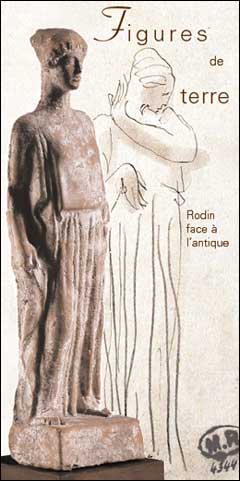Following the Tanagras exhibited at the Louvre, here are those owned by Rodin. These greek figurines, made of clay, which were rediscovered at Tanagra in Beotia, Central Greece at the end of 1870, became symbols of elegance and feminine beauty and were extremely popular at the end of the 19th century. Rodin, who collected antiques, found their charm irresistible and bought several hundred Egyptian, Greek and Roman statuettes.
Nature, unique source of inspiration.
For Rodin these objects expressed the old masters ability to capture nature, which became his unique source of inspiration. But in 1913, when he exhibited his most beautiful antiques amongst his own sculptures and drawings, he began to doubt the authenticity of his Tanagras, since according to him they were easier to fake because they were cast from moulds, and so left them with his drawings at "La Goulette des Moines", his house in Meudon.
An Imaginary Museum.
The exhibition presents a selection of these terracottas whilst evoking the context of the artist's life, the origin of his acquisitions, as well as records of the 1913 collection itself, thanks to archives and old photographs conserved by the museum, such as a picture of the dancer Loie Fuller, whom Rodin described as a "Tanagra in action". Some of his contemporary drawings from this period - architectural, draped figures and women-figure vases with ocre watercolour, shed new light on this collection.
|








